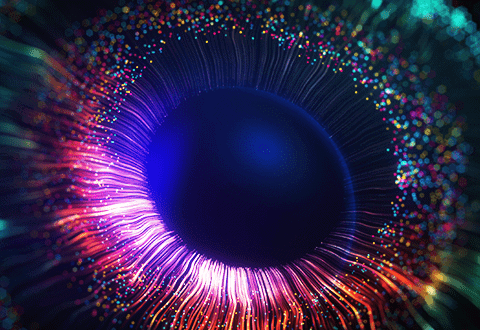LipiScan™ Improves Dry Eye Diagnosis with High-Def Images of Eyelid Glands

Access Eye is excited to share the addition of LipiScan™ dynamic meibomian imager to our arsenal in diagnosing and treating dry eye disease. LipiScan™ technology captures high-definition images of the meibomian glands in the eyelids to diagnose meibomian gland dysfunction (MGD) accurately. MGD is responsible for an estimated 86% of dry eye cases, and LipiScan™ helps our doctors provide precise diagnosis and timely treatment to reduce dry eye symptoms quickly.
What Is Meibomian Gland Dysfunction?
The meibomian glands are sebaceous or oil glands found along the edges of the upper and lower eyelids near the eyelashes. They secrete lipid-rich oil that nourishes the eye’s surface for healthy tear film and prevents rapid tear evaporation. There are about 31 glands in the upper eyelids and 26 in the lower lids. Meibomian gland dysfunction occurs when these eyelid glands become blocked or clogged, preventing oil from spreading over the eyes and throwing off the balance of the tear film.
Healthy tear film relies on oil from the meibomian glands to stop the aqueous layer (water tears from the lacrimal gland) from drying out on the eye. The tear film’s mucus (mucin) layer spreads the oil and water layers over the eye’s surface. The tear film lubricates your eyes to keep them healthy, and meibomian gland dysfunction disrupts that homeostasis, causing eye irritation, redness, burning, stinging, and blurred vision.
MGD is the most common cause of dry eye disease and blepharitis (eyelid swelling). Thick oil secretions may block the glands, and the limited oil that makes it through the glands is of poor quality and crusty. Chronic MGD causes constant gland blockages, making it impossible for oil to make it onto the eye’s surface and causing permanent damage to the tear film without treatment.
The risk of MGD goes up with age; people 40 and older are at risk, and women who wear eye makeup are more likely to develop meibomian gland dysfunction.
How Does LipiScan™ Work?
LipiScan™ accesses the structure of the meibomian glands using dynamic surface illumination and transillumination technology for quick and intuitive pictures that help our eye doctors visualize the glands with a multidimensional view. These images let us see the number of meibomian glands in your eyelids and analyze their health. LipiScan™ offers fast and accurate diagnosis, so our eye doctors can create a treatment plan that targets the meibomian glands, which may include warm compresses, eyelid cleansers, and OptiLight treatments.
Traditionally, MGD is diagnosed by applying pressure to the eyelid edges to observe oil secretion, quality, and quantity. The stability of the tears can be assessed by measuring the tear breakup time, but these methods don’t let our dry eye specialists visualize the glands. LipiScan™ is a revolutionary technology for diagnosing MGD that helps patients get relief from dry eyes faster and more effectively with an accurate diagnosis.
Schedule Your Dry Eye Consultation
If you struggle with chronic dry eyes, schedule an appointment online to be seen at one of our five locations or call (540) 371-2020. Our ophthalmologists and optometrists serve patients in King George, Falmouth, Plank Road, Parkway, Aquia, and Fredericksburg, Virginia.
















